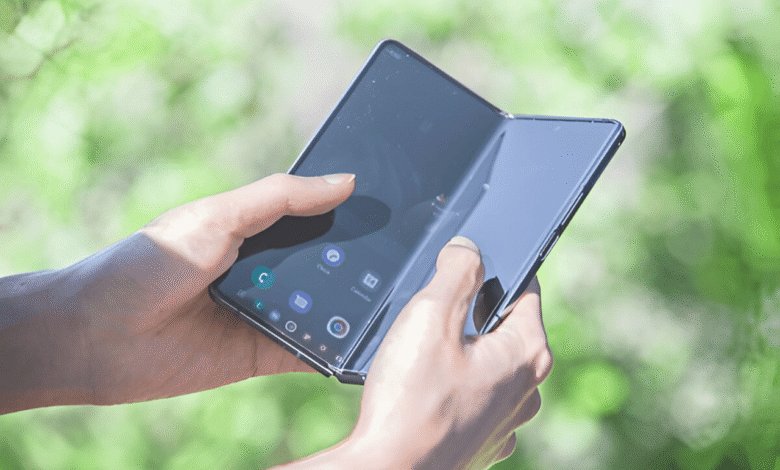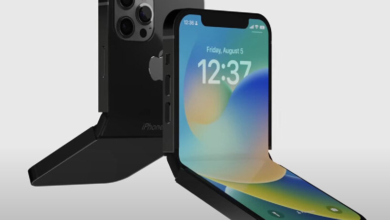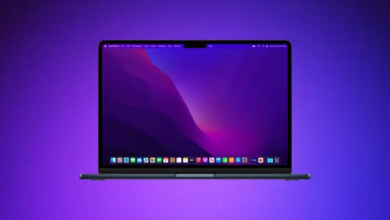Foldable Phones: Hype or the Future of Mobile?
Foldable phones revolution or fad? Explore the future of mobile tech and whether foldables will replace smartphones. Latest trends analyzed.

Foldable phones have sparked a major shift in smartphone design, blending the compactness of traditional handsets with the expansive screens of tablets. As tech giants like Samsung, Huawei, and Motorola push the boundaries of flexible displays, these innovative devices promise to redefine how we use our phones. But with high prices, durability concerns, and mixed consumer reactions, the question remains: Are foldable phones just a temporary trend, or do they represent the next big leap in mobile technology?
The journey of foldable phones from concept to reality has been filled with both breakthroughs and setbacks. Early models faced criticism for fragile screens and bulky designs, but recent iterations show significant improvements in hinge mechanisms, display resilience, and software optimization. As competition heats up and prices gradually decline, the debate intensifies will foldable phones eventually replace conventional smartphones, or will they remain a premium niche for tech enthusiasts? The answer may shape the future of the entire mobile industry.
Foldable Phones
The Evolution of Foldable Phones
The concept of a foldable phone isn’t entirely new early prototypes and concept designs date back to the late 2000s. However, it wasn’t until Samsung launched the Galaxy Fold in 2019 that foldable technology entered the mainstream. Since then, the market has seen rapid advancements in hinge mechanisms, screen durability, and software optimization. Companies like Huawei with the Mate X series and Motorola with the revived Razr have experimented with different form factors, including book-style folds and clamshell designs. Each iteration brings improvements, but challenges such as high costs, display fragility, and battery life remain hurdles for mass adoption.
Current Market and Consumer Adoption
Despite their futuristic appeal, foldable phones still occupy a small segment of the smartphone market. Their premium price tags often exceeding $1,500 make them inaccessible to the average consumer. Additionally, concerns about long-term durability, particularly with folding screens, have led to skepticism. However, industry analysts predict that as production scales up and technology matures, prices will drop, making foldables more appealing. Samsung’s success with the Galaxy Z Fold and Z Flip series indicates growing consumer interest, especially among tech enthusiasts who value innovation and multitasking capabilities.
Technological Challenges and Breakthroughs
Display Durability
Early foldable screens suffered from visible creases, pixel degradation, and vulnerability to scratches. Breakthroughs like ultra-thin glass (UTG) and advanced polymer layers now allow for smoother folds while maintaining screen integrity. Samsung’s self-healing film technology further minimizes micro-scratches, pushing durability closer to traditional smartphones.
Hinge Mechanism
The hinge is the backbone of foldable devices, requiring thousands of folds without failure. Innovations like multi-link cam mechanisms (used in Galaxy Z Fold) and brushless designs reduce friction and dust accumulation. Some manufacturers are even testing liquid metal alloys for hinges to enhance strength and longevity.
Battery Life
Foldables demand more energy to run larger displays, yet space for batteries is limited. Advances in stacked battery technology and AI-based power optimization help extend usage. Future models may adopt graphene batteries for faster charging and higher capacity without bulk.
Software Optimization
Many apps struggle to adapt between folded and unfolded modes. Google’s Android Foldables Support Library and Samsung’s Multi-Active Window encourage developers to optimize apps. Emerging Artificial intelligence driven UI scaling could dynamically adjust layouts for any screen ratio.
Dust & Water Resistance
Traditional IP ratings are difficult to achieve with moving parts. Recent progress includes nanocoating on hinges and gasket-sealed internals (seen in Galaxy Z Fold 3). Future designs may use magnetic seals or hydrophobic membranes for full waterproofing.
Thickness & Weight
Early foldables were bulky, but slimmer UTG displays and redesigned internal layouts are trimming thickness. Materials like titanium alloy frames and carbon fiber back panels help reduce weight without sacrificing strength.
Manufacturing Costs
Low yield rates for flexible displays kept prices high. Companies like BOE and Samsung Display are improving laser-cutting techniques and panel yields, which could lower costs by 30-40% in coming years.
The Future of Foldable Phones
Mainstream Adoption Through Lower Prices
Currently, foldable phones remain premium devices with hefty price tags, but industry trends suggest costs will decline as production scales up. As more manufacturers enter the market and supply chains optimize, foldables could reach price parity with flagship smartphones within 3-5 years, making them accessible to a broader audience.
Improved Durability
Early foldables faced criticism for fragile screens and hinge mechanisms. Future models will likely incorporate ultra-thin glass (UTG) with self-healing properties, reinforced hinges with dust/water resistance, and more robust folding mechanisms to enhance longevity and consumer confidence.
New Form Factors
Beyond today’s book-style and flip-style foldables, we may see rollable screens, tri-fold designs, and even stretchable displays. Companies like TCL, LG (before exiting the market), and Oppo have already showcased prototypes that push the boundaries of flexible display technology.
App Optimization
As foldables gain traction, app developers will prioritize seamless UI transitions between folded and unfolded states. Google’s Android foldable optimizations and Samsung’s multi-tasking features hint at a future where foldable-first software enhances productivity and media consumption.
Integration With Emerging Tech (AI, AR, Wearables)
Foldables could become central hubs for AI assistants, augmented reality (AR) experiences, and even wearable extensions (like secondary displays for smartwatches). Their larger screens make them ideal for immersive AI-driven interfaces and next-gen mobile computing.
Potential Entry of Apple Into the Market
Rumors suggest Apple is exploring foldable iPhone or iPad designs. If Apple enters the foldable space, it could accelerate industry standards, app development, and consumer adoption similar to how the original iPhone revolutionized smartphones.
Repairability Concerns
Foldables currently face criticism for being harder to repair and recycle. Future models may focus on modular designs, eco-friendly materials, and longer-lasting components to align with growing environmental consciousness in tech.
Shift From Niche
While foldables are still a niche segment today, continuous improvements in usability, durability, and affordability could eventually make them the default choice over traditional slab-style smartphones ushering in a new era of mobile computing.
Read More: Why Edge Computing Will Outpace the Cloud
Conclusion
Foldable phones stand at a fascinating crossroads in mobile technology, offering a glimpse into a future where versatility and innovation take center stage. While early adopters have embraced their transformative potential, mainstream adoption still hinges on overcoming key challenges like durability concerns and premium pricing. As manufacturers continue refining flexible display technology and bringing down costs, foldable phones are steadily evolving from experimental gadgets into viable everyday devices. However, whether they’ll completely replace traditional smartphones or remain a premium alternative depends on how quickly these improvements reach consumers at accessible price points.
The debate surrounding foldable phones ultimately reflects a larger question about how we want to interact with technology. Their ability to combine portability with expanded screen real estate gives them undeniable appeal for multitaskers and tech enthusiasts alike. While they may not dominate the market overnight, the rapid advancements in hinge mechanisms, app optimization, and battery efficiency suggest that foldable phones are more than just a passing trend. As the technology matures and becomes more affordable, we may very well look back at this era as the beginning of a fundamental shift in smartphone design one that redefines what our pocket-sized devices can do.
FAQs
Are foldable phones durable?
Modern foldable phones use ultra-thin glass and advanced hinge mechanisms to improve durability, but they are still more fragile than traditional smartphones.
Why are foldable phones so expensive?
High production costs for flexible displays and complex hinge systems contribute to their premium pricing, though prices are expected to drop over time.
Can foldable phones replace tablets?
Yes, foldables like the Galaxy Z Fold offer tablet-sized screens when unfolded, making them a versatile alternative to carrying multiple devices.
Do apps work well on foldable phones?
Most major apps now support foldable displays, but some may still need optimization for seamless transitions between folded and unfolded modes.
Will Apple make a foldable iPhone?
While Apple has not confirmed anything, rumors suggest the company is exploring foldable technology, possibly launching a device in the coming years.












2 Comments